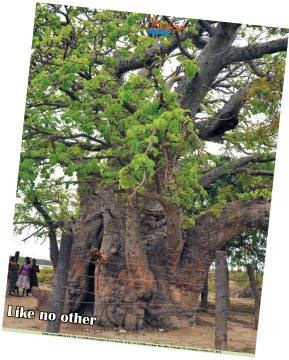|
Cover:
Learning the ABCs - The Pinchi way

‘Pinchi and the Alphabet’, is an imaginary concept of famous
children's writer, Janaki Sooriyarachchi. “I recalled how I learnt the
alphabet when I was a child. I gave each letter a name and they became
my friends.
I imagined them in the sky among the clouds, among the trees and
bushes in the garden, in the shadows fallen on the floor and on the
beautiful wings of butterflies.
Some letters danced to a rhyme and some smiled. I imagined that some
letters were brought from heaven by little fairies. All that was in my
little fancy world as a child, was poured into Pinchi and the Alphabet -
a DVD for children”, Janaki said at the launch of Pinchi & the Alphabet,
an educational research movie at the BMICH on September 12.
Many children may have heard of Janaki because she has written
manycolourful stories for children. These stories have enthralled young
and old. Even young children who are yet to learn their ABCs yearn to
look at her books as they understand the story by just looking at the
colourful and beautifully sketched drawings that cover in some instances
nearly three quarters of a page.
Back cover:
Like no other
The Baobab tree (Adansonia digitata)
 This tree amazingly found on the island of Delft stands isolated in
its splendour. It is presumed to have been brought by seafaring Arab
Traders to Sri Lanka. This tree amazingly found on the island of Delft stands isolated in
its splendour. It is presumed to have been brought by seafaring Arab
Traders to Sri Lanka.
It is aklso said that the Giant Baobab trees were brought by the
Dutch to harvest the leaves to feed the horses, remain to be the other
link to the lost days of horse breeding.
Adansonia is a genus of eight species of tree, six native to
Madagascar, one native to mainland Africa and one to Australia. The
mainland African species also occurs on Madagascar, but it is not a
native of that island.
A typical common name is baobab. Other common names include boab,
boaboa, bottle tree, upside-down tree, and monkey bread tree. The
generic name honours Michel Adanson, the French naturalist and explorer
who described A. digitata.Adansonias reach heights of 5 to 30 metres (16
to 98 ft) and have trunk diameters of 7 to 11 metres (23 to 36 ft).
Glencoe Baobab – an African Baobab specimen in Limpopo Province, South
Africa, often considered the largest example alive, up to recent times
had a circumference of 47 metres (154 ft) and an average diameter of
15.9 metres (52 ft).
-Internet |

